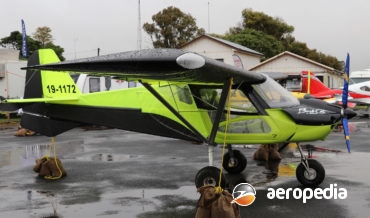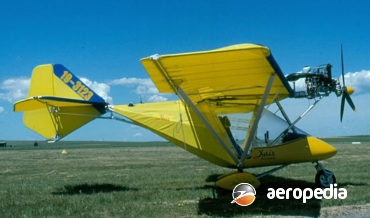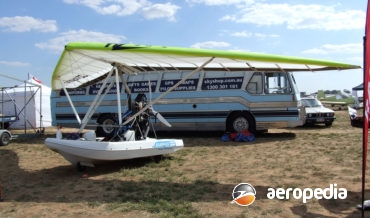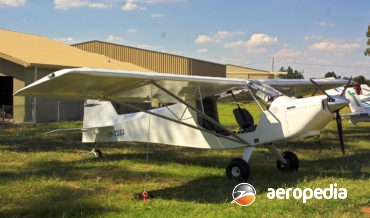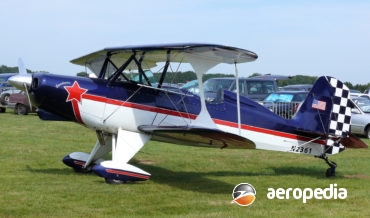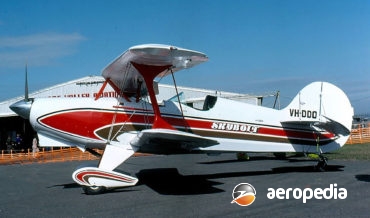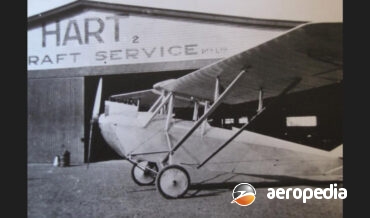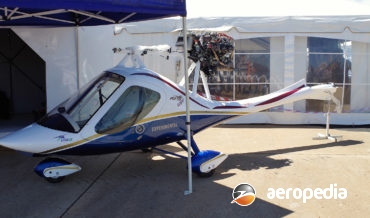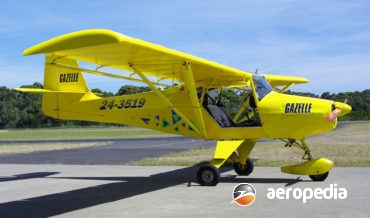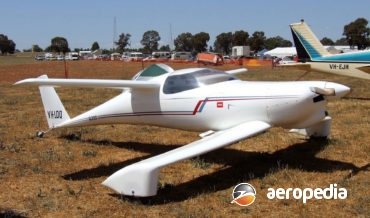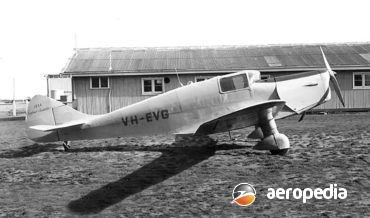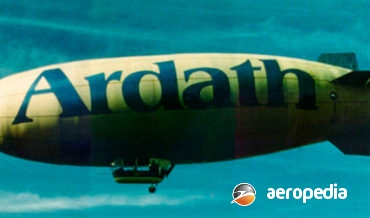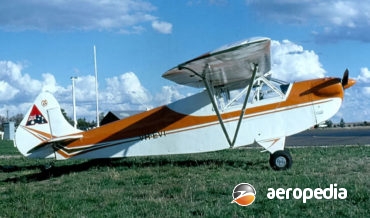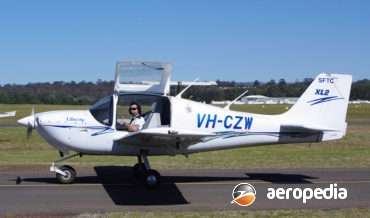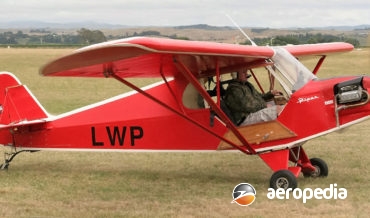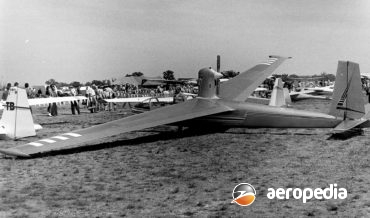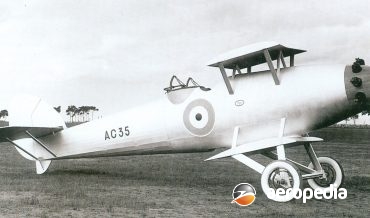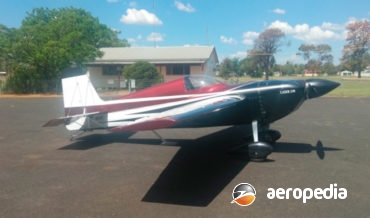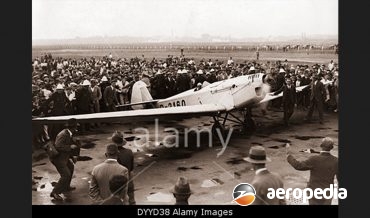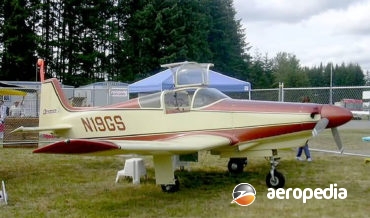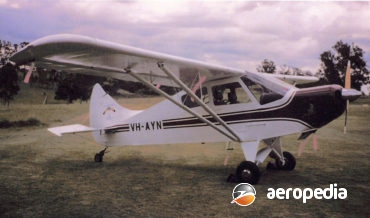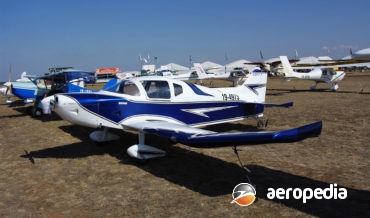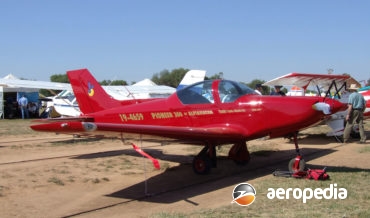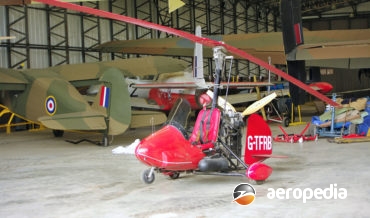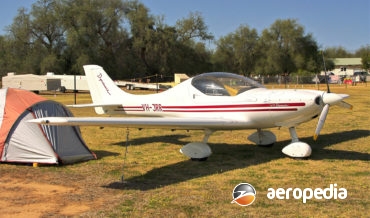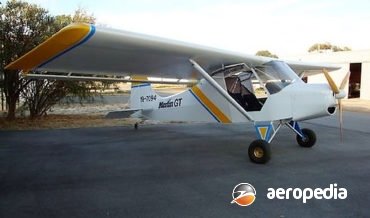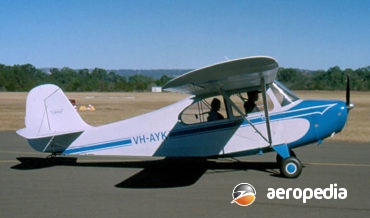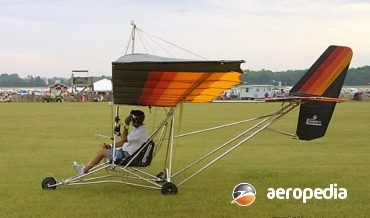All Contents
Contents
The BushCat is a two-seat side-by-side strut –braced high-wing monoplane designed to meet US LSA regulations and was developed from the Company’s earlier design, the Rainbow aircraft Cheetah XLS.
David C. Eyre
- May 8, 2019
The X-Air was designed in France and launched on the market in kit form in 1993. It is a conventional three axis control aircraft which is usually registered in the microlight / ultralight category.
David C. Eyre
- May 8, 2019
The Ramphos is a trike developed in 1998 to operate for the enjoyment of tourists requiring sightseeing flights over local beaches in Italy and which would be economical and easy to operate as a flying boat.
David C. Eyre
- May 8, 2019
One of the new series of light aircraft produced by Rans Inc at Hays in Kansas in kit form for amateur builders.
David C. Eyre
- May 8, 2019
The Courier is marketed by Rans Inc of Hays, Kansas, and was introduced to the company’s range in 1985.
David C. Eyre
- May 8, 2019
Thomas Stoddard commenced development of a light aircraft in 1975 and set up a facility at the Cedar Grove Airport in Seattle.
David C. Eyre
- May 8, 2019
The Starduster Too was designed by Louis Stolp and George Adamas for cross-country flying with an open cockpit and has been marketed by the Stolp Starduster Corp of Oroville, California, as a open sports plane for the amateur constructor.
David C. Eyre
- May 8, 2019
The 2/3 Spitfire, as it was initially known, has been produced by the Supermarine Aircraft Factory at Archerfield, QLD and was a fairly new foray into producing scale replicas of well known warbirds in Australasia.
David C. Eyre
- May 8, 2019
Mr Lamar Steen designed the Skybolt with simplicity of construction as the main aim. A two-seat fully-aerobatic biplane, it was designed to be constructed by amateur constructors.
David C. Eyre
- May 8, 2019
In the 1930s David Staig, an automobile engineer from Surrey Hills in Melbourne, obtained a pilots licence and decided to build his own aircraft.
David C. Eyre
- May 8, 2019
Built in Brazil in South America, the Starfox V6 Super is one of a number of light aircraft produced for the light aircraft market and more than 2,300 examples are said to have been built.
David C. Eyre
- May 8, 2019
The Wallaby, which was based on the Sopwith B.1 Bomber, was similar to the Sopwith Atlantic, which had been used by Harry Hawker in an unsuccessful trans-Atlantic attempt.
David C. Eyre
- May 8, 2019
Following the success of the Kitfox in Australia, development of the series by Calair, a division of Hedaro International Pty Ltd, lead to the CA-22, the first flight of this model being made on 22 June 1990, this being certificated to CAO 101.55 standard, followed by development of JAR-VLA version
David C. Eyre
- May 8, 2019
The Q2 is a high performance two-seat canard design, a development of the Quickie aimed at the inexperienced first time amateur constructor, with only a small working area and a normal complement of tools
David C. Eyre
- May 8, 2019
The M-11 series of light monoplanes was designed by F G Miles to meet a requirement formulated by Mr Whitney Straight, who operated a series of flying clubs in the southern United Kingdom.
David C. Eyre
- May 8, 2019
The MA-1 airship was designed by Mantainer Pty Ltd of Airport West, VIC, the project being initiated by Mr A Norton with assistance from Mr B Blake, an aeronautical engineer. After construction, the machine (registered VH-PSE) made a number of test flights in 1978 at the Sports Aviation Soaring Centre
David C. Eyre
- May 8, 2019
The Luton Major, a tandem two-seat cabin monoplane, was designed by the Luton Aircraft Company in 1939 as a successor to the Luton Minor. The Major was also intended to be constructed by amateurs. Designed as a low-cost aircraft, it could be fitted with a variety of engines varying in
David C. Eyre
- May 8, 2019
Of similar configuration to the Maxair Drifter, the Air Cam is a two-seat, open-cockpit, light twin-engine aircraft intended for aerial photography which has utility applications, and which is marketed by Leza-Lockwood Corp of Sebring, Florida.
David C. Eyre
- May 8, 2019
The XL-2 was designed by Anthony Tiarks and built in the United Kingdom as a two-seat low-wing, general aviation aircraft in the late 1990s by Liberty Aircraft, a subsidiary of the company which previously conceived and marketed the very successful Europa kitplane.
David C. Eyre
- May 8, 2019
This is one of a series of light aircraft kits produced by Light Miniature Aircraft of Keechobee, Florida in kit form for amateur construction.
David C. Eyre
- May 8, 2019
The Blanik L-13 glider was a two-seat trainer produced by Let Kunovice in Czechoslovakia in the 1950s, the prototype making its first flight in 1956 and more than 3,000 examples have been delivered in a variety of models over many years. It is said to be the most widely used
David C. Eyre
- May 8, 2019
The Legacy is one of a range of aircraft produced by Lancair, formerly known as Neico, for the kit-built market and is a high-performance private owners touring machine, being an up-dated variant of the Lancair 320.
David C. Eyre
- May 8, 2019
In 1926 the RAAF was seeking to obtain a number of new aircraft types, one of which was to be a single-engine biplane for army co-operation and light-bombing duties.
David C. Eyre
- May 8, 2019
The Z-2300 was designed for unlimited class competition aerobatics and is a two-seat development of the single-seat Z-300, which itself was developed from the Rebel 300.
David C. Eyre
- May 8, 2019
The Klemm L 26 was one of a series of light aircraft produced at the conclusion of World War I.
David C. Eyre
- May 8, 2019
The Barracuda was designed by Geoffrey Siers, a former RAF pilot and design engineer with British Aerospace, who moved to the United States in 1964.
David C. Eyre
- May 8, 2019
The Boomerang is a fairly new aircraft to the Australian scene, being developed by the D & C Aircraft Company of Glamorganvale, QLD
David C. Eyre
- May 8, 2019
The Alca 2 is a timber and foam composite construction two-seat light aircraft designed and developed by its owner - builder Albert Cassar in Australia and is similar externally to the Jodel D-11 and Falconar F12 series.
David C. Eyre
- May 8, 2019
The Pioneer series of light sporting aircraft is produced in kit form in Italy by Alpi Aviation at its plant at La Comina airfield near Pordenone.
David C. Eyre
- May 8, 2019
The Pioneer 300 is one of a series of light touring and training aircraft produced by Alpi Aviation in San Quirino, Italy, the 300 being a two-seater with an electrically operated retractable undercarriage.
David C. Eyre
- May 8, 2019
The Commander Elite is a two-seat gyrocopter produced by Air Command International of Caddo Mills, Texas and is one of a range of machines produced by this Company.
David C. Eyre
- May 8, 2019
The Dynamic is an advanced light-weight light aircraft seating two side-by-side. Conceived in 1996, series production commenced in 2000 and by 2005 more than 100 had been delivered to 19 countries.
David C. Eyre
- May 8, 2019
The R40S is a low-wing all-metal construction kit aircraft produced in Romania for the light aircraft market. The prototype (YR-6138) was shown at the Paris Airshow in June 2001, this aircraft making its first flight on 3 May 2001.
David C. Eyre
- May 8, 2019
The Merlin, which was originally designed in Canada in 1990 by John Burch, was developed by Aerocomp Inc of Merritt Island, Florida and in recent years has been available from Blue Yonder Aviation.
David C. Eyre
- May 8, 2019
he Model 7 Champion series was introduced to the Aeronca range in 1946 immediately after World War II, as a light training and touring monoplane.
David C. Eyre
- May 8, 2019
The Aeronca series was produced by the Aeronautical Corporation of America at Lunken Airport in Cincinnati, Ohio. The prototype C-2 was flown for the first time in 1928 powered by the company’s own engine, the 19.3-kw (26-hp) Aeronca E-107A two-cylinder air-cooled unit. Produced in considerable quantity, this model had a
David C. Eyre
- May 8, 2019
The A-20 Vista is a light sporting high-wing monoplane built in the company’s facility in Kiev in the Ukraine in kit form and is a two-seats in tandem light aircraft with a strut-braced wing, the engine being in the pusher configuration behind the cockpit, and it has a conventional undercarriage.
David C. Eyre
- May 8, 2019
The Cobra was a high-wing, wire-braced ultra-light monoplane produced in the United States and marketed in Australia by Ultralight Flying Machines of North Balwyn, VIC,being able to meet ANO 95.10 regulations.
David C. Eyre
- May 8, 2019
The AT-3 was designed and developed in Poland by Aero Sp of Warsaw as a light two-seat sporting aircraft of all metal construction. Derived from the Pottier P220 it can be fitted with variants of the Rotax 912 series of four-cylinder engines, or the Limbach L2400 series.
David C. Eyre
- May 8, 2019
Aero Kros is a Polish company producing light aircraft for the European market and this machine was designed to comply with Federation Aeronautique Internationale microlight regulations and US light sport aircraft regulations.
David C. Eyre
- May 8, 2019
Recent Comments
Archives
Categories
- No categories
Categories
- No categories
Latest Posts
Newsletter

